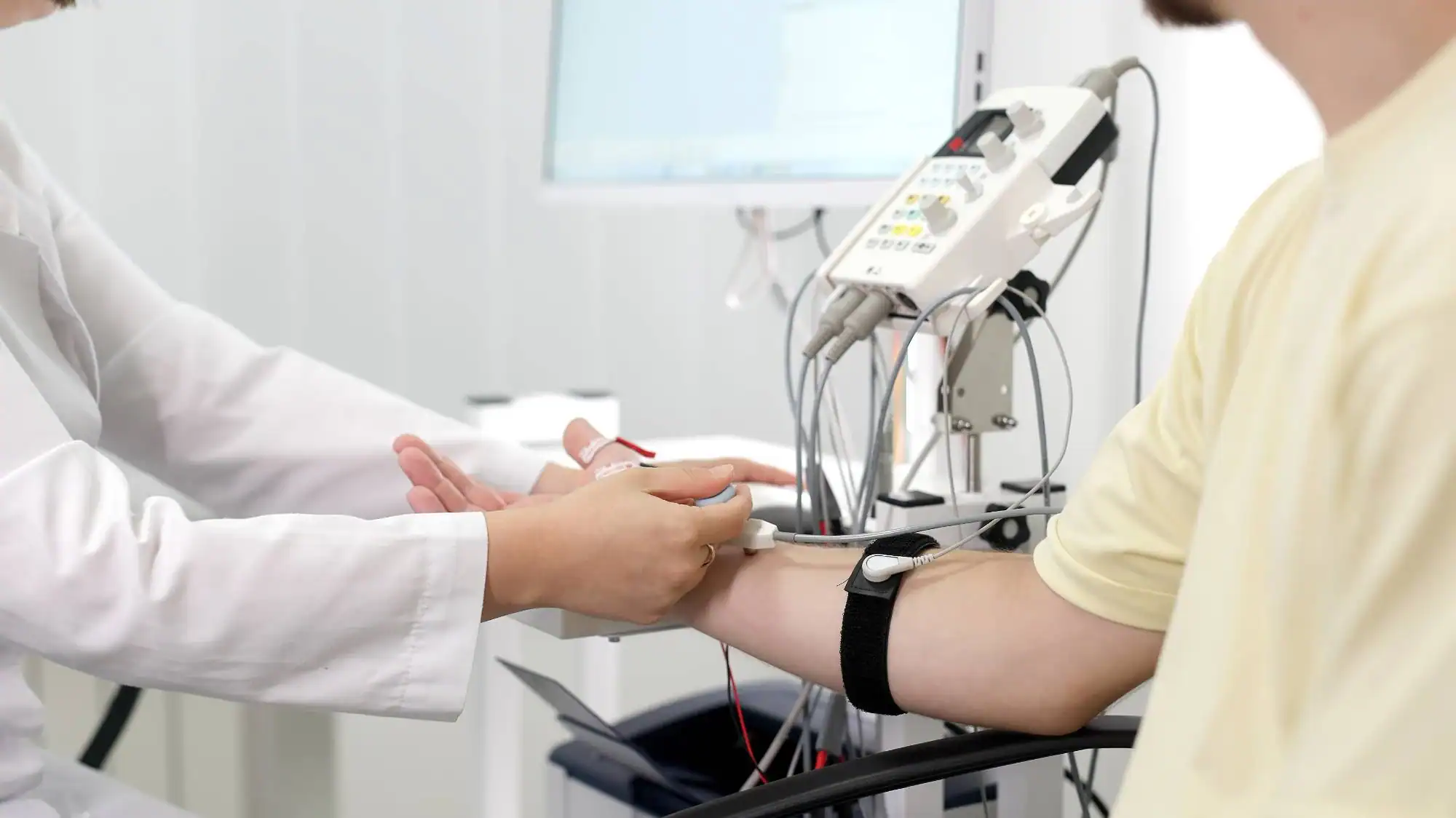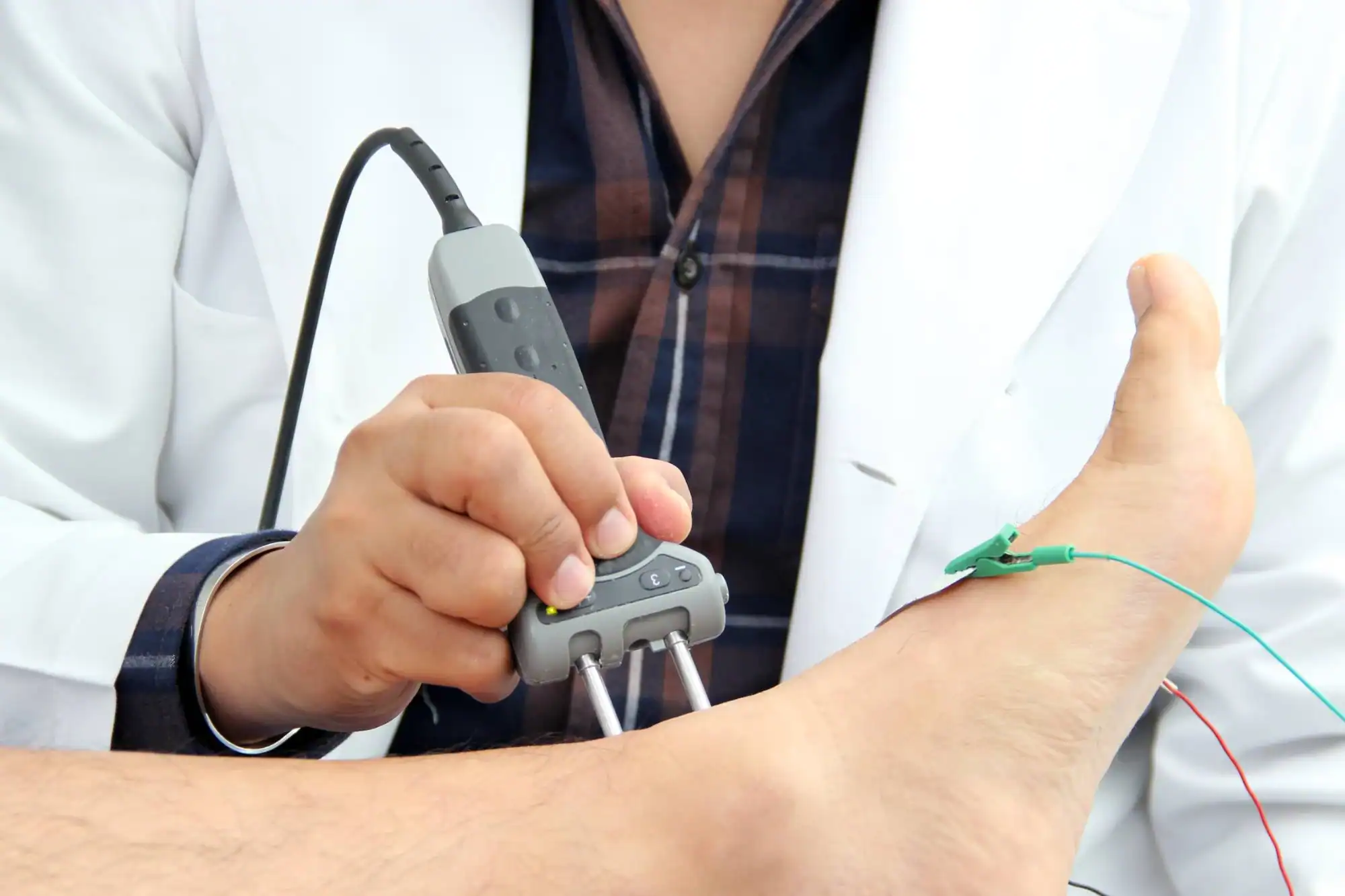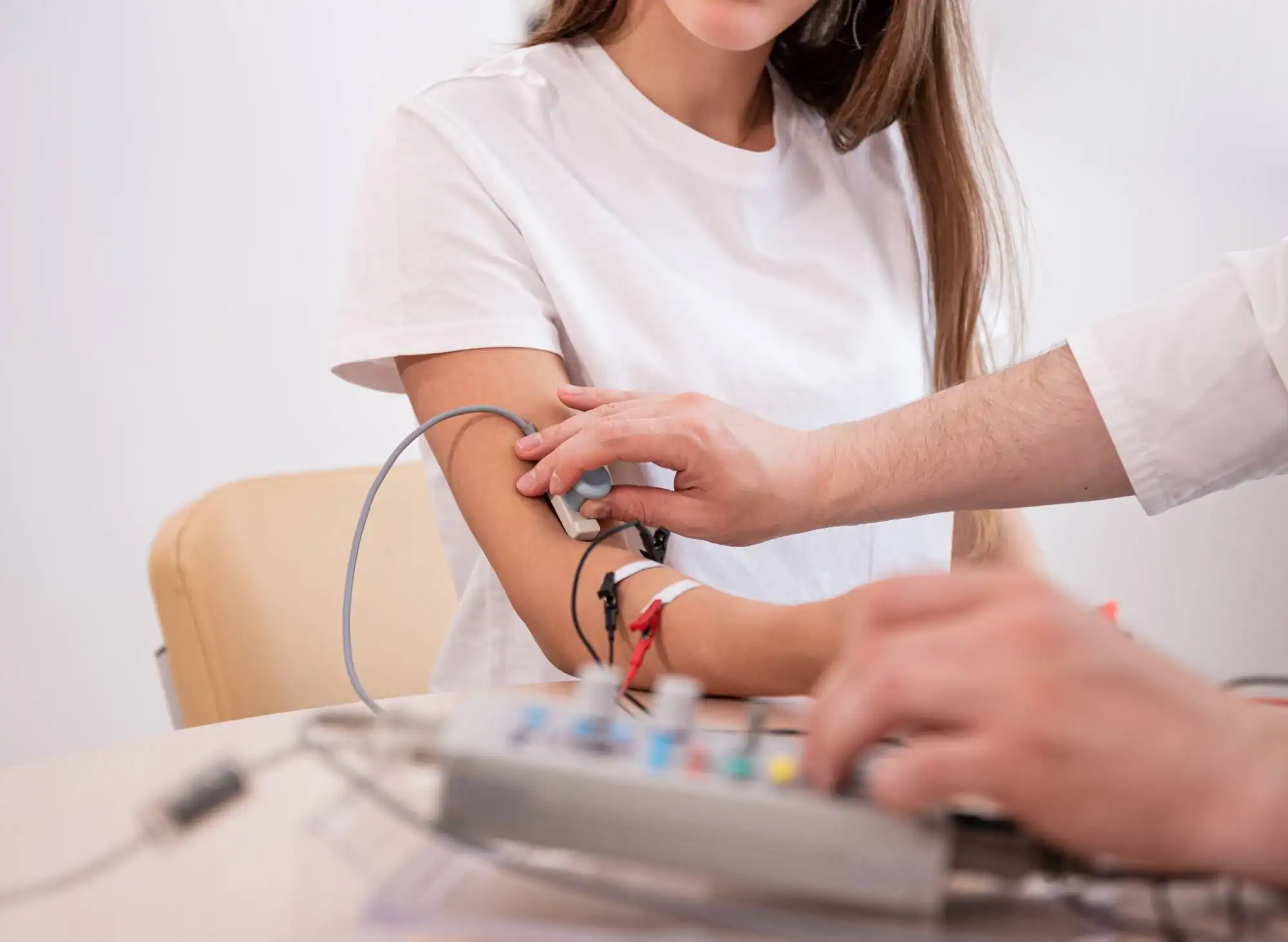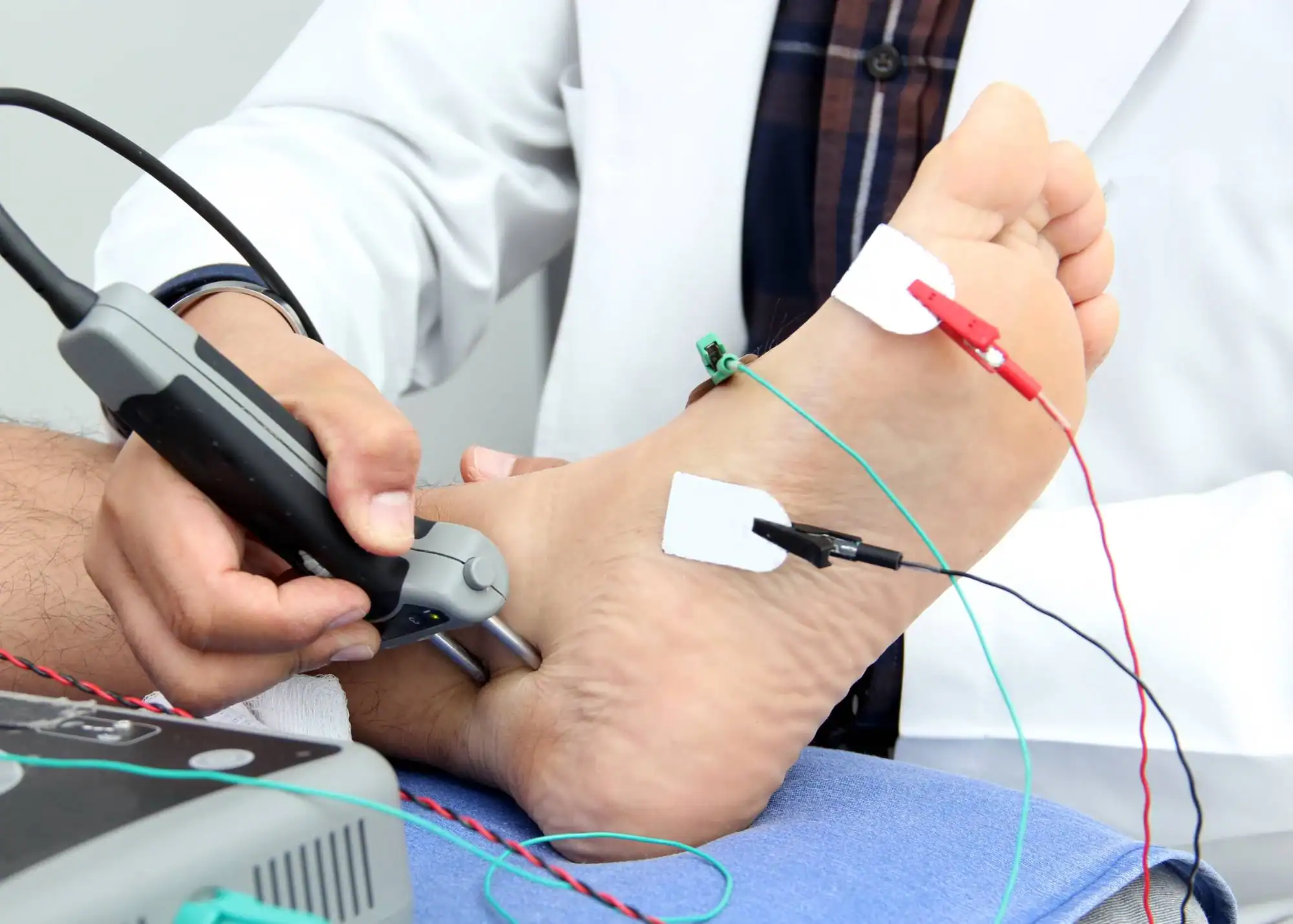Precise EMG and nerve conduction testing that pinpoints exactly what’s causing your numbness, tingling, or weakness.

Reviews

You’ve been dealing with symptoms that don’t make sense. Numbness that comes and goes. Tingling that keeps you awake. Weakness that makes simple tasks frustrating.
Our nerve and muscle testing gives you the clarity you need. Within 90 minutes, you’ll know if your symptoms stem from nerve compression, muscle disorders, or something else entirely. No more guessing. No more wondering if it’s all in your head.
The electrodiagnostic testing we perform measures how well your nerves conduct electrical signals and how your muscles respond. This isn’t just another scan that shows structure – it shows function. It reveals exactly where the problem lies and how severe it is, so your treatment can target the real issue.
We’ve been serving the Oakwood community for over a decade, specializing in complex spine and nerve conditions. Our physicians are board-certified in pain management with extensive training in electrodiagnostic medicine.
We’ve performed thousands of EMG and nerve conduction studies, helping patients get accurate diagnoses when other approaches have failed. Our focus isn’t just on running tests – it’s on interpreting results in the context of your specific symptoms and medical history.
You’re not just another appointment. You’re someone who deserves answers, and we have the expertise to find them.

Your nerve and muscle evaluation starts with a detailed discussion of your symptoms. We need to understand exactly what you’re experiencing, when it started, and what makes it better or worse.
The nerve conduction study comes first. We place small electrodes on your skin and deliver mild electrical pulses to measure how quickly and completely your nerves transmit signals. Most patients describe this as feeling like small static shocks – uncomfortable for a moment, but not painful.
Next is the EMG portion, where we use a thin needle electrode to test muscle activity. We check how your muscles respond both at rest and when you contract them. This tells us if the problem is in the nerve, the muscle, or the connection between them. The entire process typically takes 60-90 minutes, and you’ll get your results immediately.

Ready to get started?
Your nerve and muscle testing includes both EMG and nerve conduction velocity studies, covering all the areas related to your symptoms. We test sensory nerves that carry feeling, motor nerves that control movement, and the muscles they connect to.
You’ll receive a detailed report explaining your results in plain language, not medical jargon. We identify specific nerves or muscles that aren’t functioning properly, measure the severity of any damage, and determine whether the condition is getting worse, stable, or improving.
Most importantly, we don’t just hand you results and send you on your way. We explain what the findings mean for your daily life and discuss treatment options that make sense for your specific situation. Your referring doctor gets a comprehensive report, but you leave understanding your own condition.
